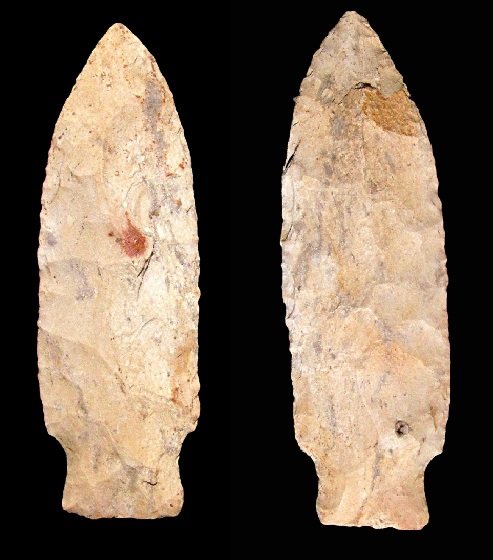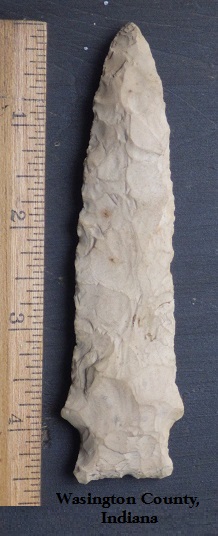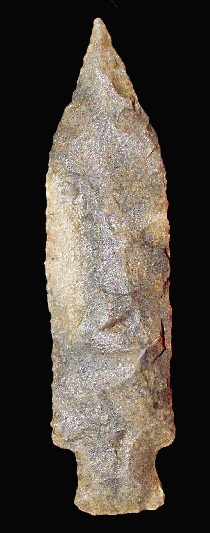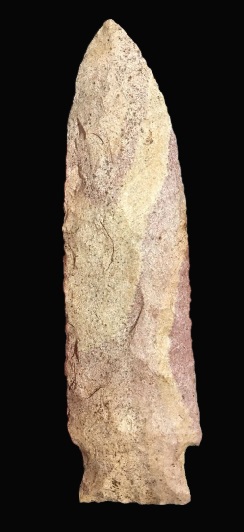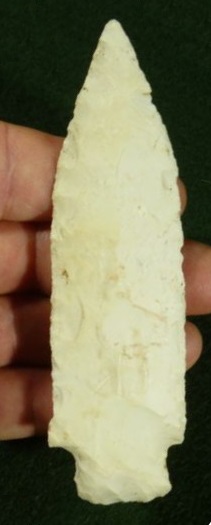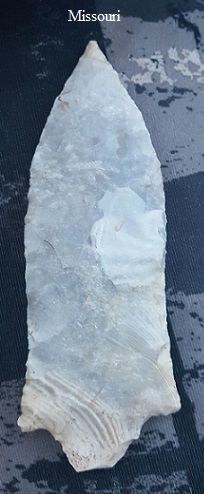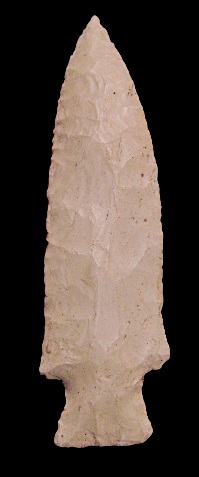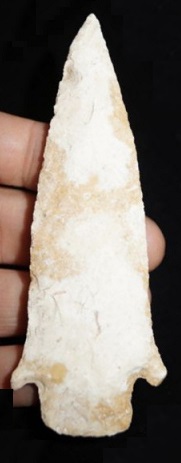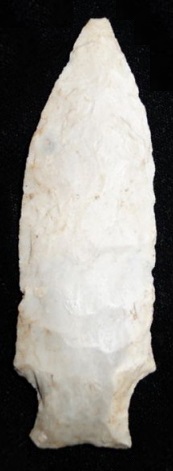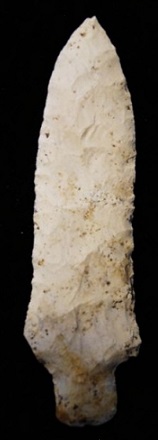Outline is Representative of Size and Shape:

Name Details:
Identified By: Edward G. Scully
Named For: Type Site
Date Identified: 1951
Type Site: Etley site, Oettle Farm, Calhoun County, Illinois
Identified By: Edward G. Scully
Named For: Type Site
Date Identified: 1951
Type Site: Etley site, Oettle Farm, Calhoun County, Illinois
Point Validity:
Valid type
Scully is a highly respected anthropologist from the University of Michigan who conducted extensive research in the Mississippi River valley and identified many different types of projectile points. This type was named in a professional publication and has many professional references. This is considered a valid type.
Scully is a highly respected anthropologist from the University of Michigan who conducted extensive research in the Mississippi River valley and identified many different types of projectile points. This type was named in a professional publication and has many professional references. This is considered a valid type.
Etley Stemmed
Cluster: Etley Cluster Description of Physical Characteristics and Flaking Pattern:
This is a large triangular expanding stem point with a flattened to elliptical cross section. The blade may range from excurvate to an outward recurvate shape. The blade is long and commonly parallel with the widest portion of the blade being above the shoulders. Examples that are heavily re-sharpened may have an incurvate or recurvate shape. The shoulders may range from barbed to having an upward angle. The shoulder shape may be dependent upon the amount of re-sharpening that the point has had. The stem is generally short and may vary from expanding to slightly contracting. The base may range from straight to slightly convex with basal and hafting region grinding absent. This point was manufactured using broad percussion flaking with minimal pressure flaking forming a random flaking pattern.
Size Measurements:
Total Length - 76 to 279 mm, Stem Length - 10 to 15 mm (typically 1/10 the total length), Barb Length - 6 to 10 mm, Width - 32 to 60 mm, Stem Width - 19 to 26 mm, Thickness - 10 to 15 mm
Total Length - 76 to 279 mm, Stem Length - 10 to 15 mm (typically 1/10 the total length), Barb Length - 6 to 10 mm, Width - 32 to 60 mm, Stem Width - 19 to 26 mm, Thickness - 10 to 15 mm
Additional Comments:
Wadlow blades are thought to be preforms for Etley points (Morrow, 2016).
Wadlow blades are thought to be preforms for Etley points (Morrow, 2016).
Distribution:
Distribution Comments:
This point has the heaviest concentrations in the St. Louis region and into east central Missouri and west central Illinois. They may be found with less frequency into western Indiana, western Kentucky, and southern Iowa. This point has rarely been reporting into southern Minnesota.
This point has the heaviest concentrations in the St. Louis region and into east central Missouri and west central Illinois. They may be found with less frequency into western Indiana, western Kentucky, and southern Iowa. This point has rarely been reporting into southern Minnesota.
Age / Periods:
Date: 4,100 - 2,500 B.P.
Cultural Period: Middle to Late Archaic
Glacial Period: Neoglacial
Culture:
Date: 4,100 - 2,500 B.P.
Cultural Period: Middle to Late Archaic
Glacial Period: Neoglacial
Culture:
Age Details:
This point type is diagnostic of the Late Archaic Titterington phase in the lower Illinois Valley, where they are dated to 2200 to 1800 B.C.E. (Morrow, 2016).
This point type is diagnostic of the Late Archaic Titterington phase in the lower Illinois Valley, where they are dated to 2200 to 1800 B.C.E. (Morrow, 2016).
Other points in this cluster / Related / Associated Points:
Go-Kart, Smith, Stone Square Stem, Wadlow
Go-Kart, Smith, Stone Square Stem, Wadlow




